I'm a big proponent of delegated authentication. It's no surprise that [Broken Authentication](https://www.owasp.org/index.php/Top_10-2017_A2-Broken_Authentication" target="_blank) is #2 at the OWASP top 10 latest report. It's been #2 for a very long time, which means that developers and enterprises are still getting this wrong. There are so many ways that authentication that can go wrong, that delegated authentication should be the preferred and possibly the default choice for all platforms. There are many different services that can provide this. I've heavily worked with Azure AD and Azure AD B2C but this time I wanted to take [Auth0](https://auth0.com/" target="_blank) for a spin. In this post I'll show you how to implement authentication and authorization with Auth0 to secure an ASP.NET Core web application and then extend the authentication mechanism to secure access to a back-end web api.
Auth0 is an Identity Provider service (among many other things) which allows you to decouple the authentication and authorisastion process from your application. Like Azure AD (B2C) and IdentityServer, the idea behind the delegated authentication is that you, as a developer and, in extension, as a company, don't have to worry about how to implement this functionality properly. By properly I mean in a secure and scalable manner that meets demand as your application grows. Auth0 takes care of these hard requirements while we can focus on the rest of the application.
The implementation below makes use of Role-based authorisation using custom Roles to secure access to various parts of the application.
1. Getting a copy of the project
If you want to jump straight to the working solution, you can grab a copy of the sample code from GitHub. To clone it locally:
git clone https://github.com/cmatskas/auth0demo.git
2. Create the Auth0 application
Prerequisites
- An Auth0 account
- .NET Core SDK
- Visual Studio 2017 >= 15.3, Visual Studio Code or any code editor/IDE you fancy ;-)
To allow our ASP.NET Core application to integrate with Auth0, we need an Auth0 application. The instructions on how to set this up can be found here. However, I've added a quick guide here as well to save you some time.
On your Auth0 Dashboard, click on Clients and then click on the Big Red Button to +Create New Client. On the modal window, choose a meaningful name for your app and then, since we're working with ASP.NET Core, choose Regular Web Application as per the image below:

Once the application is created, skip the quick start and go to the Settings Tab which contains the information you need in order to configure your ASP.NET Core application:
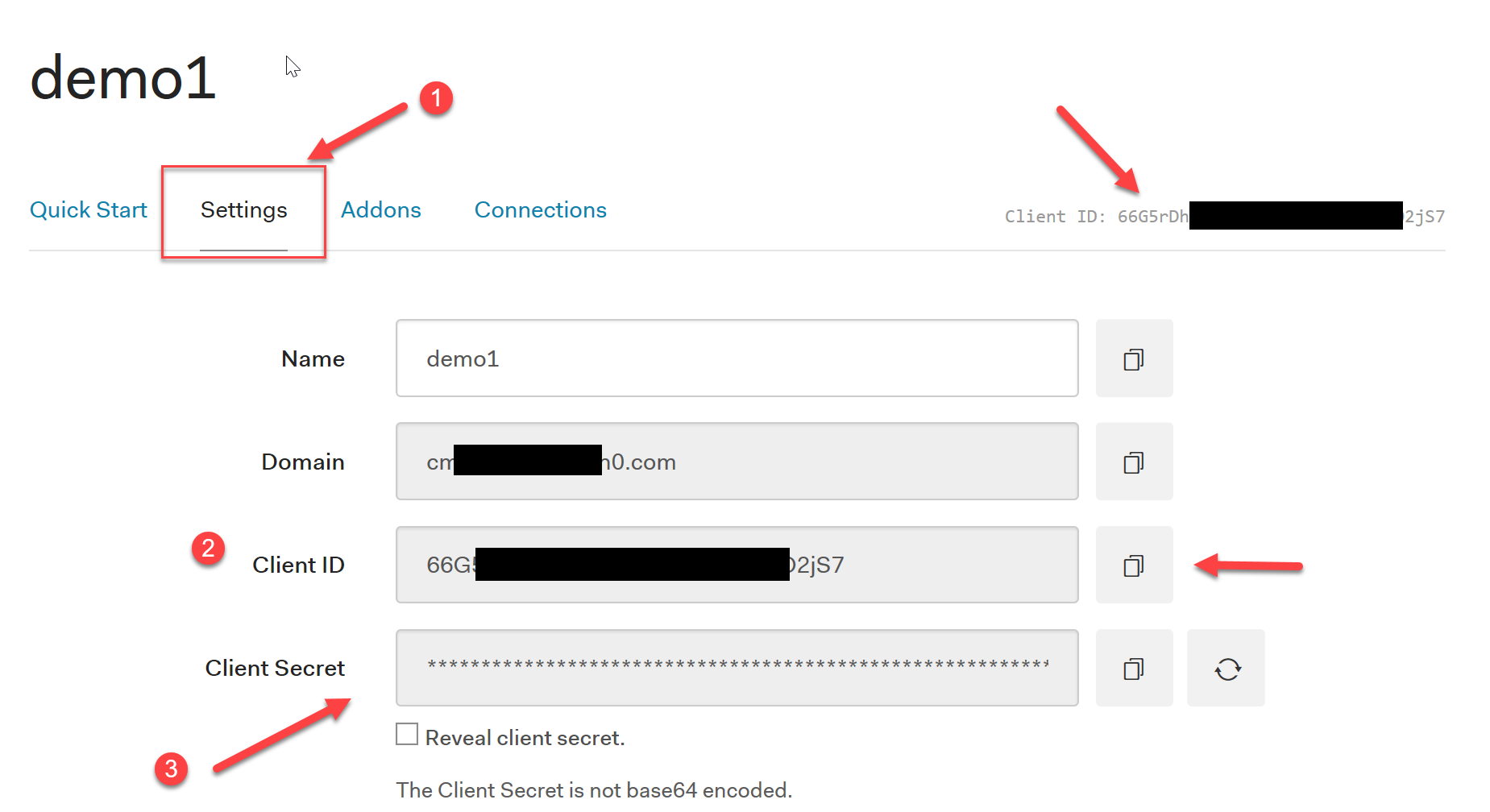
You can follow the Auth0 walkthrough that explains what you need to do to setup your application (in Auth0 terminology: Application == Client) and how to get your Auth0 client keys. Finally, since this application will need to access an API, we also need to configure the JWT token (i.e. the access token for authenticating in the API)
3. Edit the project with your settings
At this point I assume you have both a .NET Core Web App and a .NET Core Web API or that you've cloned the project from Step #1. With the Auth0 settings in place, we can now edit our web application's appsettings.json to add the Auth0 configuration settings. Open the file and populate the values below:
"Auth0": {
"Domain": "{yourAuth0domainname}.eu.auth0.com",
"ClientId": "{your Auth0 Client ID}",
"ClientSecret": "{your Auth0 Client Secret}",
"CallbackUrl": "http://localhost:1102/signin-auth0"
}
WARNING: You should avoid storing sensitive information like ClientSecret, API Keys etc in your
appsettings.jsonbecause they are stored in clear text. You should use a service like [Azure KeyVault](GHOST_URL/securing-asp-net-core-application-settings-using-azure-key-vault/" target="_blank) to store and retrieve this data as needed. More info on using KeyVault can be found [here](https://docs.microsoft.com/en-us/azure/key-vault/key-vault-whatis" target="_blank).
4. Add the Authentiction middleware
The setup for Auth0 is fairly straightforward. Comparing this to the Azure AD integration process, I found that Auth0 is much easier to work with. The code that adds the authentication middleware is provided below. The code needs to be added to the Startup.cs class:
At a very high level, the code above does the following:
- adds authentication to the
servicescollection - configures the middleware to store the tokens for reuse later
- increases the scope from just
open_idwithprofileto retrieve the users' profile details - adds an
audienceto request the API access permissions to be included in the scope - maps the token claims to the user name and user role respectively
5. Create the login/logout actions
Once the middleware is in place we can then add the login and logout actions to the ASP.NET Core Web application. These actions are used to proxy to Auth0's login page and send a request to clear out the auth session when a user logs out. Create a new controller, name it AccountController.cs and add the following code:
Finally, I wanted to provide a way for authenticated users to see their username on the page. To achieve this, I edited the Views\Shared\_Layout.cshtml page and added the following code in the navigation bar section:
When a user logs in, his/her name is displayed on the navigation bar with an option to logout. Unauthenticated users can only see the login option.
6. Adding users and custom Roles
I mentioned a few times already that the purpose of this post is to show how to configure the authentication parameters and then enforce role-based authorization. At the moment, this is not configured anywhere. To implement and role-based authorization, we need to do 2 things:
- Add custom roles to our Auth0 users
- Consume and validate the user roles in the WebApp and WebAPI
For this post we're assuming that all the users are created and managed inside the Auth0 platform. There is a plethora of options when it comes to storing user information such as social media accounts or custom user databases. However, in this instance we'll keep things simple and use the built-in user management service.
On the Auth0 portal, on the Dashboard page, select Users from the left-hand side navigation bar. Press the + Create New User button and add a user using whatever username (email) and password you want.

You can use a real or a fictional account and you don't have to verify the email in order to use the newly created account for the purpose of this demo:
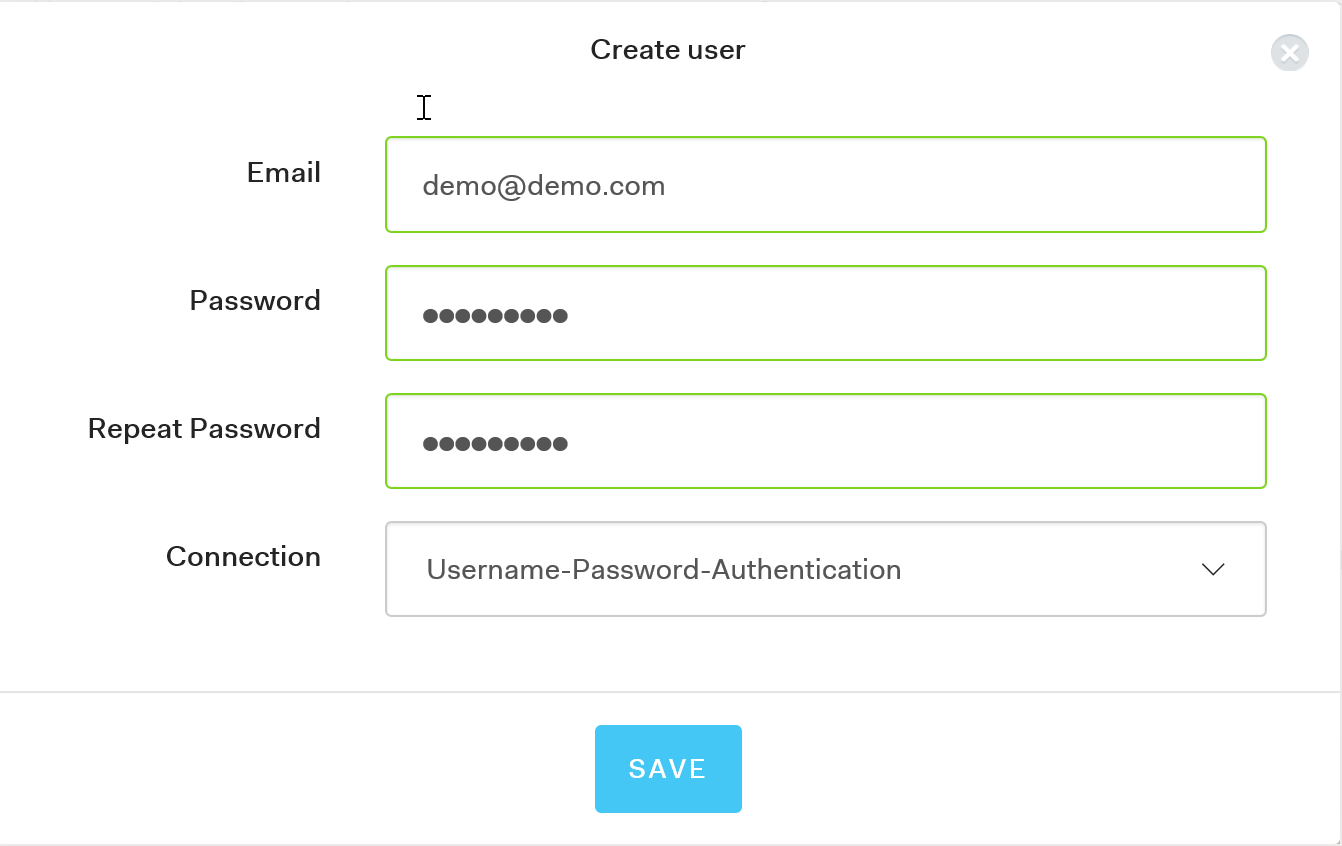
Once the user is created successfully, we need to add some extra metadata that can be used later to determine the user's role. The metadata can be anything that makes sense to your organization. For this example I decided to use the job property. Open the newly created user, scroll down to metadata and add the json metadata as per the picture below:

Make sure you press the Save button to persist the changes. Now we can create an Auth0 Rule that determine's the user's role during the authentication workflow. You can find more about Auth0 Rules here.
On the Auth0 portal, on the Dashboard page, select Rules the left-hand side navigation bar. Press the +Create New Rule button.

Select the Add Roles to User rule from the list of available options:
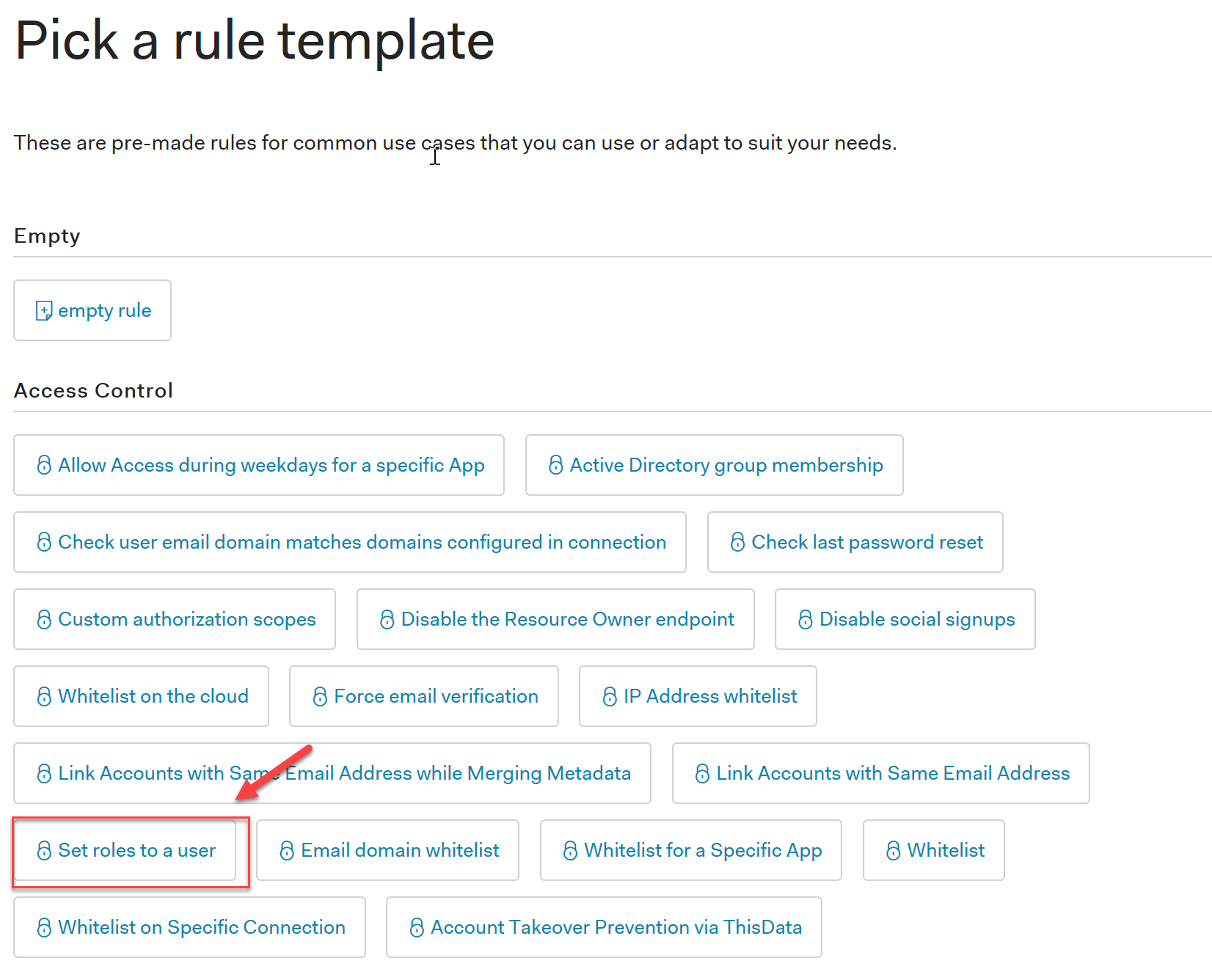
The rule editor allows developers to use JavaScript to implement the rule functionality. In this instance we look into the user's app_metadata to determing what role to assign to both the access_token and id_token.
Make sure you save the rule.

You can test the rule to see whether everything's working as expected. You can also use inline console.log() statements to output extra information to the test functionality, or you can stream the logs to a separate page that listens for debug/console statements. The full code of the rule is provided below:
You'll notice that custom claims need to namespaced (using any url). This is mentioned in the Auth0 [documentation](https://auth0.com/docs/api-auth/tutorials/adoption/scope-custom-claims#custom-claims" target="_blank) and I've attached the excerpt below:
We can, however, define a non-standard claim by namespacing it through a rule: {example omitted}.
Any non-Auth0 HTTP or HTTPS URL can be used as a namespace identifier, and any number of namespaces can be used. The namespace URL does not have to point to an actual resource, it’s only used as an identifier and will not be called by Auth0.
I've explicitly used the http://schemas.microsoft.com/ws/2008/06/identity/claims/roles namespace because this is what the [ASP.NET Core Identity](https://docs.microsoft.com/en-us/dotnet/api/microsoft.aspnetcore.identity?view=aspnetcore-2.0" target="_blank) object maps to by default. I'm also assigning the role to both the id_token and access_token because the id_token is used by the MVC application and the access_token is sent to the API. Without these claims in the access_token, it wouldn't be possible to propagate the urer role(s) to the API.
To enforce authentication on any controller or controller action, we can apply the [Authorize] attribute. If you want to understand how Authorization works in ASP.NET Core, you can find the details in the [official documentation](https://docs.microsoft.com/en-us/aspnet/core/mvc/controllers/filters#authorization-filters" target="_blank).
We can now run and test the application! If everything's been configured correctly then clicking on the login page, should redirect you to Auth0's login page which looks like this:

Add Authentication and Authorization to the .NET Core API
The final piece of the puzzle requires that we configure the authentication and authorization middleware in our API. Open the Startup.cs file in the API project and add the following code:
The code above adds the necessary authentication middleware that validates the access_token and retrieves the token claims and roles. We also need to add the Auth0 settings in the appsettings.json file. The configuration settings are provided below:
"Auth0": {
"Domain": "{yourAuthDomain}.eu.auth0.com",
"ApiIdentifier": "{your API Identifier}"
}
The middleware code allows us to apply the [Authorize] attributes to controllers and controller actions and use role-based authorization like in the example below:
In this example, users with the guest role can only execute GET actions. Those with the developer role can execute GET, POST, PUT actions and those with an admin role can execute all of the above, plus DELETE.
Adding Refresh Tokens for mobile applications
WebApp uses the id_token to access the user's profile while the access_token is used to make authenticated calls to the WebAPI. A Refresh Token allows an application to request Auth0 to issue a new access_token or id_token directly, without having to re-authenticate the user. This will work as long as the Refresh Token has not been revoked or expired. Refresh tokens can also expire but they're rather long-lived.
To configure the refresh_token, in the Auth0 dashboard, select APIs from the left-hand navigation bar and then the Settings tab.
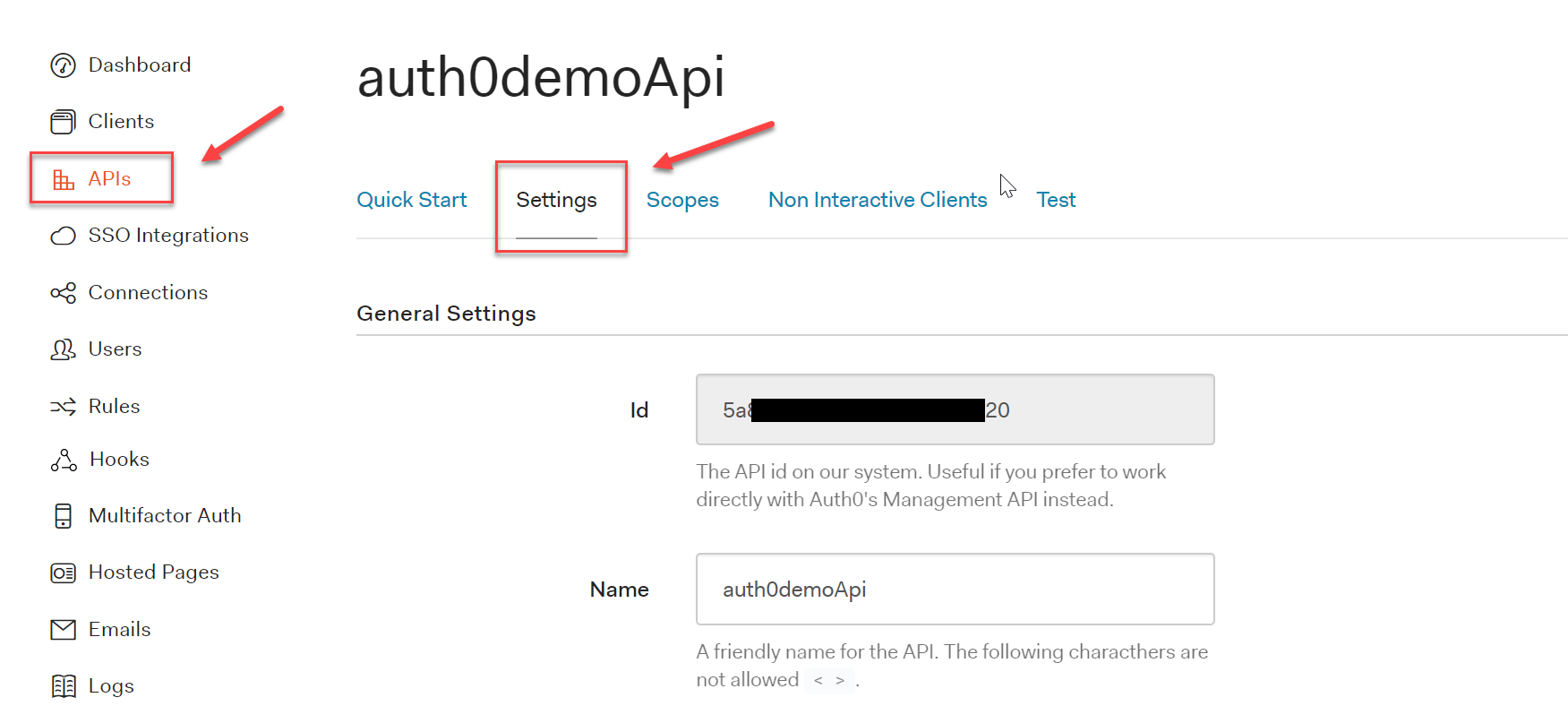
Scroll down to the bottom of the settings and toggle the Offline Access to on/true
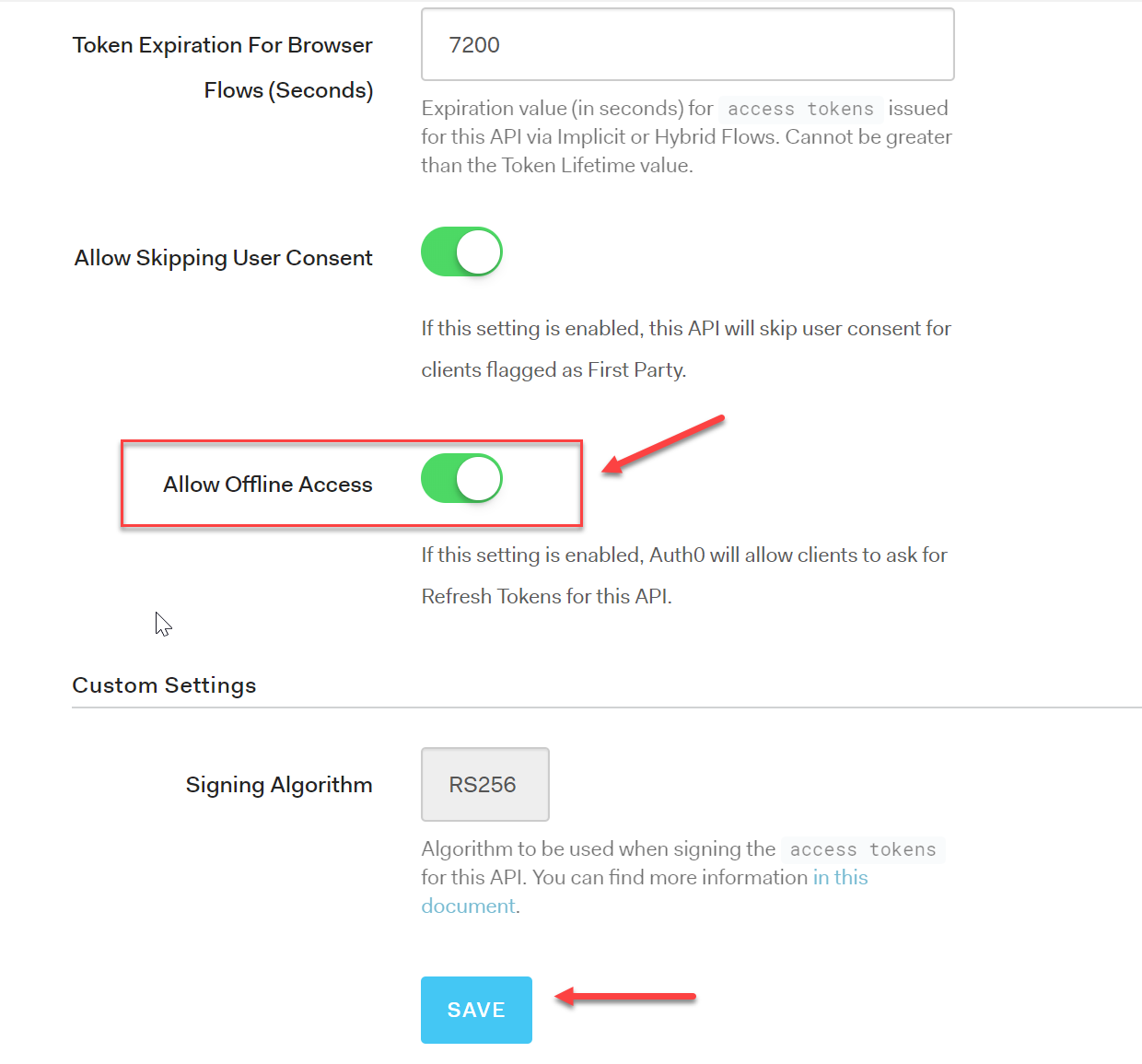
With this setting on, we can request for a Refresh token during the first authentication by including the offline_access scope. That's all you need. The Offline Access toggle in your API settings set to true and the extra scope in the authentication request.
In your application (assuming it's a .NET Core Web Application) you can add the new scope in the authentication middleware:
public void ConfigureServices(IServiceCollection services)
{
//other code omitted for clarity
options.Scope.Clear();
options.Scope.Add("openid");
options.Scope.Add("profile");
options.Scope.Add("offline_access");
options.SaveTokens = true;
// rest of code omitted for clarity
}
Upon the first subsequent login, you'll notice that we need to approve the extra scope for Offline Access:
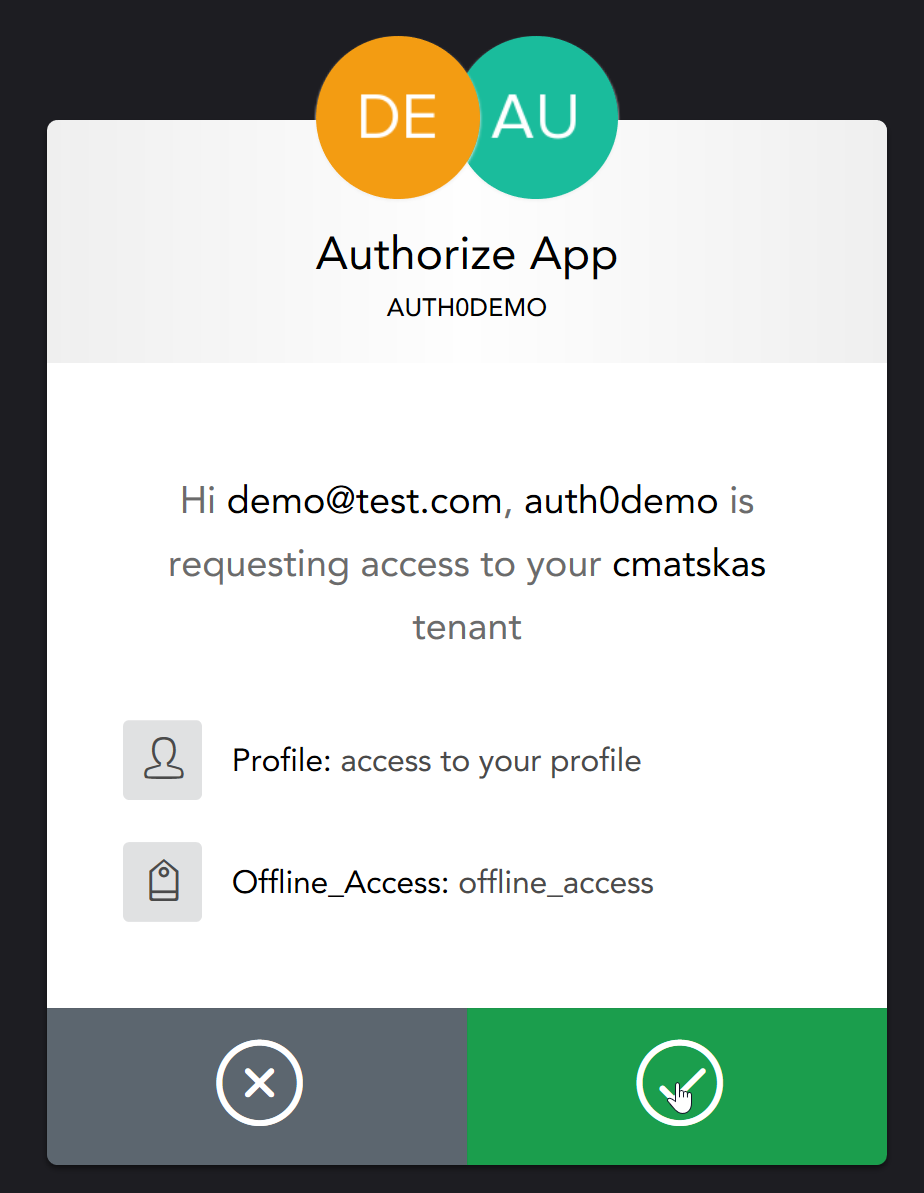
Once logged in successfully, we access the Refresh Token using the following code:
var refreshToken = await HttpContext.GetTokenAsync("refresh_token");
There's also a very good example that shows how to use Auth0 and Refresh Tokens in a Xamarin mobile application [here](https://github.com/auth0-community/auth0-xamarin-oidc-samples/blob/master/Quickstart/01-Login/iOS/iOSSample/MyViewController.cs" target="_blank)
Summary
Authentication is a complex process and the last thing any developer wants is to compromise the security of a system due to bad a authentication and authorisation implementation. On the other hand, I'm sure hackers would be delighted...It's no surprise that it's Broken Authentication is still #2 at the OWASP top 10 list for 2017! Auth0 is a great service that can help you implement this with only a few steps and I hope this post proves how straightforward this process is. I would urge you to look at your current authentication and authorization needs and leverage any of the established Identity Providers (Azure AD, Identity Server or Auth0) before diving in and writing your own auth provider...It's a new era!